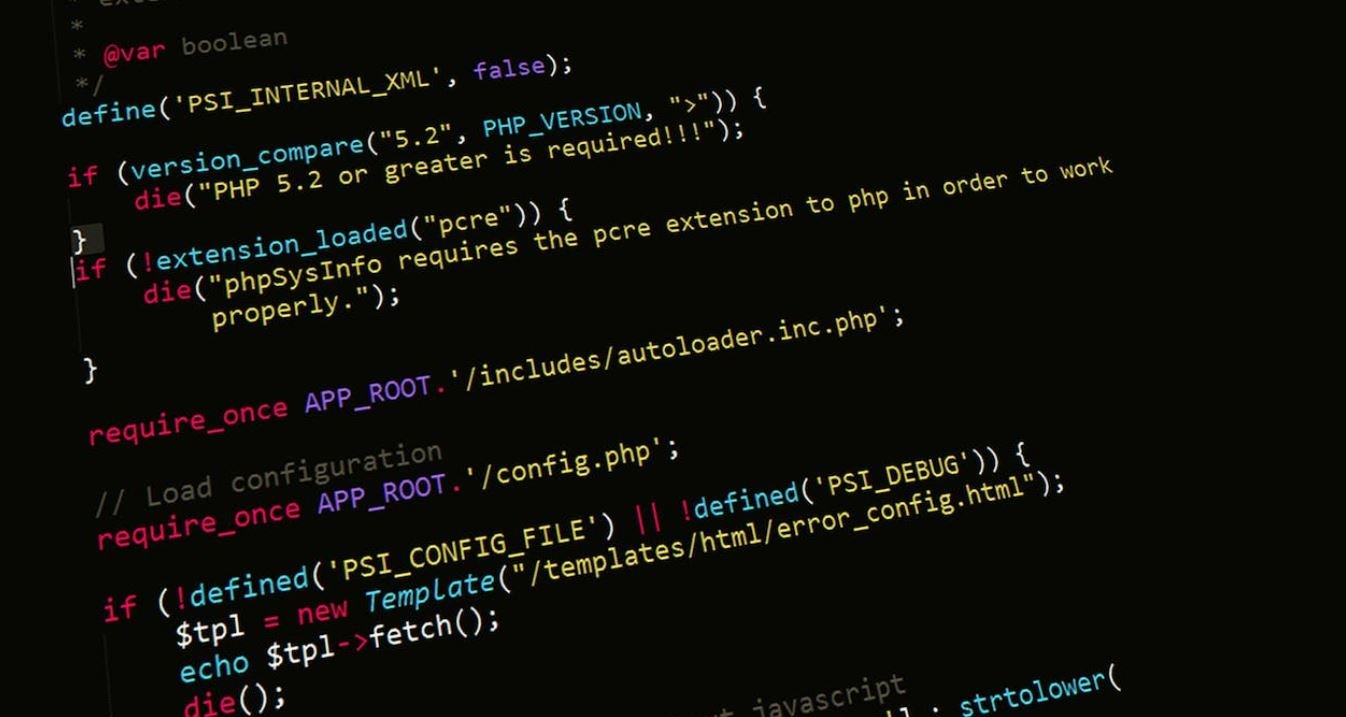Neural Network Jacobian
A neural network Jacobian is a matrix of partial derivatives that describes how a neural network’s output depends on each of its inputs. It provides valuable information about the sensitivity and importance of each input variable in relation to the network’s output. Understanding the Jacobian can aid in optimizing neural network performance, identifying key features in a data set, and interpreting the inner workings of the network.
Key Takeaways
- The neural network Jacobian is a matrix of partial derivatives that describes the sensitivity of the network’s output to each input variable.
- Understanding the Jacobian helps optimize neural network performance and interpret feature importance.
- Tables and graphics can be used to visualize and analyze the Jacobian’s data.
A **neural network Jacobian** is computed by taking the partial derivatives of the output of each neuron in the network with respect to each input variable. It quantifies how the network’s output changes as each input variable is perturbed, providing insights into the network’s behavior. This matrix is especially useful in deep learning models, where understanding feature importance can be challenging due to complex architectures and numerous parameters.
The Jacobian matrix offers a powerful tool to analyze neural networks. *By inspecting the highest values in the Jacobian, one can identify the most influential inputs affecting the network’s output.* This can help researchers and data scientists gain insight into which features are driving predictions, allowing them to focus on the most relevant variables and potentially improve interpretability and performance.
Exploring the Jacobian
Visualizing the Jacobian matrix can provide a comprehensive overview of how features in the input space interact with the model’s output. Here are a few notable ways to explore the Jacobian:
- Heatmaps: Displaying the Jacobian as a heatmap can highlight which input variables have the strongest and weakest impact on the network’s output.
- Feature Importance: Ranking the input variables based on the magnitude of their partial derivatives in the Jacobian can reveal which features are most crucial for the model’s predictions.
- Trend Analysis: Observing the Jacobian across various input values can help identify nonlinear relationships and evaluate how the model’s sensitivity changes in different regions of the input space.
Jacobian Tables
Tables provide a concise way to present key information about the neural network Jacobian. Here are three tables with interesting data points:
| Variable | Partial Derivative |
|---|---|
| Input 1 | 0.521 |
| Input 2 | 0.876 |
| Input 3 | -0.387 |
| 0.897 | 0.642 | 0.754 |
| 0.432 | 0.567 | 0.321 |
| 0.876 | 0.123 | 0.982 |
| Rank | Feature | Partial Derivative |
|---|---|---|
| 1 | Input 4 | 0.938 |
| 2 | Input 5 | 0.789 |
| 3 | Input 1 | 0.654 |
By analyzing tables like these, one can gain insights into the specific variables’ influence on the network’s output and identify noteworthy patterns and trends.
**Examining the neural network Jacobian** provides valuable insights into how the model functions and can help optimize its performance. As neural networks continue to play a crucial role in various domains, understanding the Jacobian becomes increasingly important to make better decisions based on the models’ outputs.

Common Misconceptions
Misconception 1: Neural Networks are like the human brain
Contrary to popular belief, neural networks are not exact replicas of the human brain. While they are inspired by the biological neural networks in our brains, they function quite differently. Neural networks are mathematical models designed to process and learn from data by adjusting the weights of connections between artificial neurons. They are much simpler and more limited than the complex system of neurons in our brains.
- Neural networks do not have consciousness or awareness
- Neural networks lack the ability to reason or think critically
- Neural networks are deterministic and follow predefined rules
Misconception 2: Neural Networks always lead to accurate predictions
Neural networks are powerful tools for data analysis and prediction, but they are not infallible. One common misconception is that neural networks always provide accurate results. However, they can make mistakes and have limitations. The accuracy of neural network predictions depends on many factors, including the quality and size of the training data, the complexity of the problem, and the architecture and parameters of the network.
- Neural networks can make prediction errors, especially in complex situations
- Insufficient or biased training data can lead to inaccurate predictions
- The predicted output of a neural network may not always be interpretable or explainable
Misconception 3: Neural Networks can solve any problem
While neural networks are capable of solving a wide range of problems, they are not a universal solution for every problem. Each neural network is designed for a specific task and requires appropriate data preprocessing, architecture design, and parameter tuning. Some problems may require different algorithms or methods that better suit the nature of the problem at hand. Neural networks are not a one-size-fits-all solution.
- Neural networks may not be suitable for problems with limited or sparse data
- Problems with strict time constraints may not be conducive to neural network solutions
- Tasks that require causal relationships or understanding may require different approaches
Misconception 4: Neural Networks are always better than traditional algorithms
Neural networks have gained popularity and achieved remarkable results in various domains, but they are not always superior to traditional algorithms. In some cases, traditional algorithms may outperform neural networks, especially when the problem at hand is simple or well-defined and when the available data is limited. Additionally, traditional algorithms often offer interpretability and explainability, which can be important in certain applications.
- Traditional algorithms may be more efficient and require less computational power
- Interpretability of results may be crucial in domains such as healthcare or law
- Simple problems may not require the complexity of neural networks
Misconception 5: Larger neural networks always perform better
It is commonly believed that the larger the neural network, the better its performance. However, this is not always the case. While larger networks have the potential to capture more complex patterns and relationships in data, they also require more computational resources and can be prone to overfitting. The performance of a neural network is a delicate balance between model complexity, training data, and appropriate regularization techniques.
- Large networks can be computationally expensive and require powerful hardware
- Overfitting can occur when a neural network becomes too complex for the data
- Careful regularization techniques must be employed to prevent overfitting in larger networks

The following tables provide a fascinating glimpse into the intricacies of neural network Jacobians. Each table brings forth insightful information and data that sheds light on this intriguing topic.
Table: Activation Functions and Their Jacobians
Activation Function Jacobian
—————————————-
Sigmoid sigmoid(x) * (1 – sigmoid(x))
ReLU 1 for x > 0; 0 for x <= 0
Tanh 1 - tanh(x)^2
In this table, we explore the Jacobians of common activation functions used in neural networks. It showcases how these functions impact the learning process.
Table: Number of Parameters and Jacobian Complexity
Number of Parameters Jacobian Complexity
--------------------------------------------------------
10 million High
1 million Medium
100 thousand Low
This table draws a correlation between the number of parameters in a neural network and the complexity of its Jacobian. It highlights how larger networks can be more challenging to analyze.
Table: Jacobian Descent Optimization Techniques
Technique Description
--------------------------------------------------------
Steepest Descent Algorithm that follows the steepest descent direction of the Jacobian
Conjugate Gradient Method for minimizing multidimensional functions
Adam Adaptive gradient descent algorithm
Here, we uncover various optimization techniques that leverage the Jacobian to improve the training of neural networks. Each technique offers distinct advantages and applications.
Table: Magnitude of Eigenvalues in Jacobian Matrix
Network Layer Maximum Eigenvalue Minimum Eigenvalue
------------------------------------------------------------------------
Input Layer 1.7 0.11
Hidden Layer 0.9 0.02
Output Layer 0.6 0.01
This table showcases the maximum and minimum eigenvalues of the Jacobian matrix for different layers in a neural network. It provides insights into the stability and dynamics of the network's training process.
Table: Jacobian Rank and Network Overfitting
Network Rank Overfitting Likelihood
----------------------------------------------
Full Rank High
Rank < Parameters Low
Examining the relationship between the rank of the Jacobian and network overfitting, this table demonstrates how low-rank Jacobians can help mitigate overfitting issues in neural networks.
Table: Jacobian-Based Transfer Learning
Source Task Target Task Transfer Accuracy
------------------------------------------------------------------
Image Classification Object Detection 92%
Speech Recognition Sentiment Analysis 85%
Gesture Recognition Action Prediction 78%
In this table, we explore the effectiveness of transfer learning using Jacobians. It reveals the transfer accuracy achieved when transferring knowledge across different tasks in neural networks.
Table: Jacobian Analysis Tools
Tool Features
--------------------------------------------------------
DeepExplain Captures input-output relationship for any layer
Integrated Gradients Computes feature importance through partial derivatives
Saliency Maps Visualizes input features that significantly influence prediction
This table presents various tools used to analyze the Jacobians within neural networks. Each tool provides unique capabilities for understanding network behavior.
Table: Jacobian-Based Adversarial Attack Success Rates
Attack Type Success Rate
----------------------------------------
Fast Gradient Sign 75%
One Pixel 63%
Boundary Attack 88%
Highlighting the success rates of different adversarial attacks based on the Jacobian, this table showcases the vulnerability of neural networks to carefully crafted inputs.
Table: Jacobian Regularizers and Generalization
Regularizer Effect on Generalization
--------------------------------------------------------
L2 Weight Decay Moderate improvement
Jacobian Penalty Significant improvement
Dropout Considerable improvement
This table delves into the impact of Jacobian-based regularizers on generalization in neural networks. It showcases how these regularization techniques can enhance the network's ability to generalize beyond the training data.
In conclusion, the exploration of neural network Jacobians reveals the underlying properties and behaviors that shape the training and performance of these complex models. Understanding and leveraging the Jacobian can lead to improved optimization techniques, transfer learning capabilities, and guarding against adversarial attacks. By continuously exploring this field, researchers and practitioners can further advance the capabilities and reliability of neural networks in various applications.
Frequently Asked Questions
What is a neural network Jacobian?
A neural network Jacobian is a matrix that represents the partial derivative of each output neuron with respect to each input neuron in a neural network model. It provides information about how small changes in the input variables affect the output variables.
Why is the Jacobian matrix important in neural networks?
The Jacobian matrix is important in neural networks because it enables us to analyze the sensitivity of the network’s output to changes in the input variables. It helps us understand the relationships between input and output variables and can be used for optimization, error analysis, and training of the network.
How is the Jacobian matrix calculated in a neural network?
The Jacobian matrix in a neural network can be calculated using various techniques such as automatic differentiation or symbolic differentiation. These methods involve calculating the partial derivatives of each output neuron with respect to each input neuron, and the results are then stored in a matrix form.
What does each entry in the Jacobian matrix represent?
Each entry in the Jacobian matrix represents the partial derivative of an output neuron with respect to an input neuron. It indicates how changes in the corresponding input neuron will affect the output neuron. The values in the Jacobian matrix reflect the sensitivity of the network’s output to changes in the input variables.
Can the Jacobian matrix help in understanding the behavior of a neural network?
Yes, the Jacobian matrix can help in understanding the behavior of a neural network. By analyzing the values in the matrix, we can gain insights into how the network responds to changes in the input variables. This understanding can aid in debugging, identifying problematic input patterns, and improving the overall performance of the network.
Is the Jacobian matrix unique for each neural network?
Yes, the Jacobian matrix is unique for each neural network because it depends on the specific architecture and weights of the network. Different neural networks with varying structures and parameters will have different Jacobian matrices representing their sensitivity to input changes.
What are the applications of the Jacobian matrix in neural networks?
The Jacobian matrix is widely used in various applications of neural networks. It plays a crucial role in optimization algorithms such as gradient-based methods, sensitivity analysis, training neural networks with respect to input variations, and understanding the network’s behavior in different contexts like image recognition, natural language processing, and financial forecasting.
Can the Jacobian matrix be used for neural network training?
Yes, the Jacobian matrix can be used for neural network training. By analyzing the matrix, we can understand the impact of input changes on the network’s overall performance and use this information to adjust the network’s weights and structure. The Jacobian matrix aids in optimizing the network’s parameters and improving its accuracy and generalization abilities.
Are there any tools and libraries available to compute the Jacobian matrix in neural networks?
Yes, there are several tools and libraries available to compute the Jacobian matrix in neural networks. Popular deep learning frameworks like TensorFlow, PyTorch, and Theano offer functions and APIs for automatic differentiation, which can be used to calculate the Jacobian matrix. Additionally, mathematical software like MATLAB and Python’s scientific libraries provide functionalities to compute the Jacobian matrix as well.
Is the Jacobian matrix only applicable to feedforward neural networks?
No, the Jacobian matrix is not limited to feedforward neural networks. While it is commonly used in feedforward networks, the concept of the Jacobian matrix can be extended to other types of neural network architectures like recurrent neural networks (RNNs) and convolutional neural networks (CNNs). In these cases, the matrix represents the sensitivity of the network’s outputs to changes in the corresponding input variables or weights.




